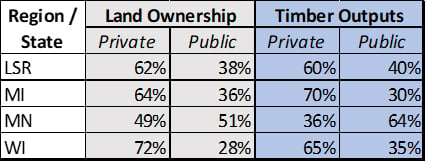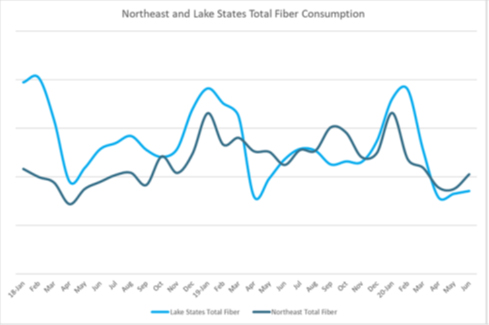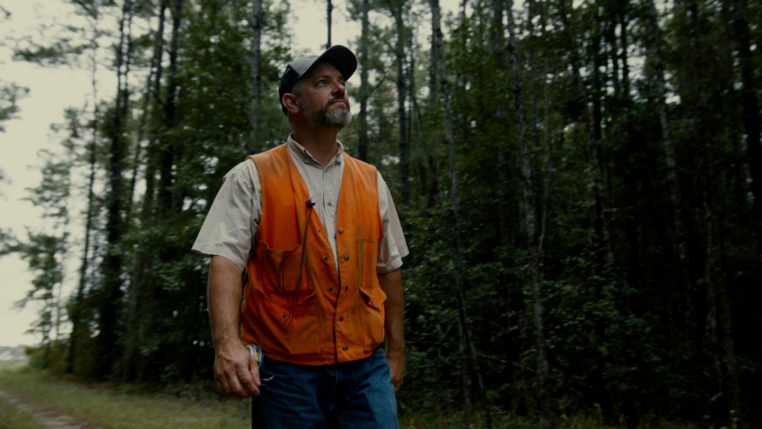FRA Lake States Region Meeting Addresses Impacts of the Pandemic to Timber Industry Lake States Region Outstanding Logger of 2020 Recognized

The FRA Lake States Region (LSR) convened a virtual meeting to discuss the challenges of the COVD-19 pandemic. The meeting, “Impacts of the COVID-19 Pandemic,” addressed the challenges of the pandemic to the forest products industry and how public timber programs of the LSR have responded. Public timber programs are a critical component of the timber supply in the LSR, providing 40 percent of the timber outputs annually. Presenters during the meeting included:
- Mike Powell, Client Solutions Specialist Forest2Market
- Heather Berklund, Chief State Forester, Wisconsin Department of Natural Resources
- Rebekah Luedtke, Executive Director, Wisconsin County Forests Association
- Craig Schmid, Deputy Director, Minnesota Department of Natural Resources, Division of Forestry
- Mark Weber, Land Commissioner and Director of the Land and Minerals Department for St. Louis County, Minnesota
- Jeff Stampfly, Acting Chief and State Forester, Michigan Department of Natural Resources

Mike Powell of Forest2Market (F2M) presented the trends driving the global and Lake States Region forest industry markets. F2M estimated that the reduction of paper and market pulp production due to COVID-related closures on the order of 2.5 million tons.
F2M also estimated that wood consumption nationally was down nearly seven percent and delivered value was down 13 percent from the previous year, YOY. In the LSR, wood delivery decreased 22 percent in the second quarter of 2020. Wood deliveries are also trending lower through June 2020 compared to recent years. This decline is a result of the closure of two paper mills as well as pandemic related production curtailments across the LSR.
In terms of timber outputs, the public agencies proceeded close to normal with the exceptions of the Forest Service and the Michigan Department of Natural Resources. As most states recognized forestry as a critical business and employees as essential, the Michigan COVID-19 restrictions resulted in an eight-week period where foresters were restricted from going to the field. This impacted the timber volume of both the Michigan Department of Natural Resources and the National Forests in the state as Good Neighbor Authority timber sales were not offered as planned.
All the public agencies worked with the forest products industry through state forestry associations to respond to the pandemic. Agencies provided timber contract extensions and reviewed and adjusted minimum bids of timber sales to reflect current market conditions and continue to evaluate opportunities to provide for safe timber auction bidding platforms. Administratively, the agencies are assessing the impacts of staff working from home and how communication and collaboration are affected during this time. Some agencies are not requiring employees to return to an office environment until June 2021. The agencies are also addressing staffing levels as hiring freezes are in place in some states.
In terms of timber programs, the message across all agencies was similar: how do we address the reduction in mill capacity due to paper mill closures in the region? These closures resulted in a loss of pulpwood markets that will eventually have a ripple effect on sawmills, timber markets, logging businesses, and rural forest-based economies.
As the public land management agencies continue to assess and adjust to the challenges of the pandemic, it’s critical that they communicate with the forest products industry. The forestry associations in the LSR are an excellent venue to discuss and resolve issues and challenges that will strain the wood supply chain. FRA also is available to address the challenges of the pandemic through our supplier – consumer relationship workshops.

FRA LSR Outstanding Logger 2020 Recognized.
One of my favorite things to do as the FRA Lake States Region Manager is recognizing the region’s Outstanding Logger of the Year. This year the Lake States Region recognized Fjeran Forest Products, LLC as the FRA Regional Outstanding Logger for 2020. Chad Morgan, FRA LSR Policy Committee Chair, recognized Blake Fjeran and his family as the winner and virtually presented them a plaque from FRA and a gift certificate for a chainsaw and a cash award of $250 compliments of STIHL. Fjeran Forest Products will now compete for the FRA National Logger of the Year recognition.
FRA members can access the FRA LSR virtual meeting by visiting the FRA website. Note: FRA website access required to view the meeting. Please contact Jacob Minor, [email protected], if you have forgotten your login or do not have one.



